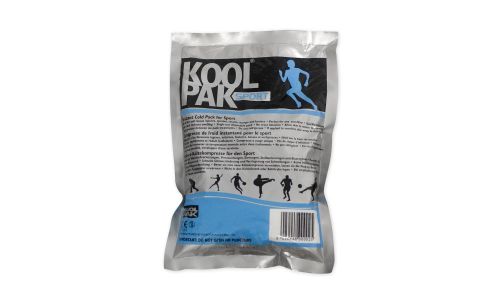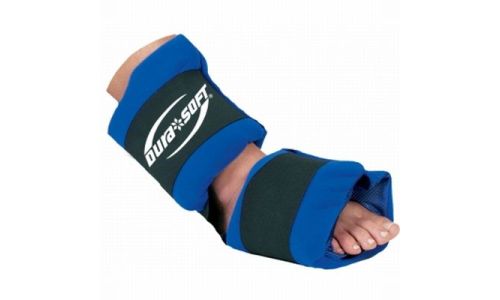RICE: The Method for Injury Recovery Explained
If you visit a doctor after an ankle or knee injury, then there's a good chance that they'll recommend you follow the RICE injury recovery method. Used by physiotherapists, doctors and sportspeople everywhere, RICE is a fast and effective immediate injury treatment method that can be crucial in the first stages of recovery. But, what is RICE, and how do you use it in the immediate aftermath of an injury in order to prevent injury aggravation and speed up the recovery process.
What Does RICE Stand For?
RICE stands for Rest, Ice, Compression and Elevation. It was introduced into physiotherapists' lexicon in 1978 by Gabe Mirkin, a well known sports fitness specialist from the United States. While RICE isn't intended as a cure for soft-tissue injuries, it is suitable for use as a first-aid treatment, with the components of RICE lasting up to a few days after the injury has occurred.
What Can RICE be Used to Treat?
RICE is generally recommended for strains and sprains to the ankle and knees, although it can be used for shoulders, elbows and wrists too. As said above, we would recommend that you don't use RICE as a cure for injuries, rather than a form of rehabilitation and first aid that can speed up the recovery process. It is suitable for the following:
- Ankle, knee, shoulder, elbow and wrist injuries
- Ligament injuries
- Strains
- Sprains
- Swelling
- Bruising
RICE Explained:
It's important to research RICE before you go ahead with the process. Remember, it is crucial that you consult a doctor before going ahead with RICE.
Step 1: Rest
The first step is to rest, and that's rest as soon as you think something in your body is wrong. Stop what you are doing, and rest for up to two days and try to avoid putting any weight on the injured area. Rest is crucial in the early stages, as the ligaments, bones and tissue will be at their weakest and most at risk of further aggravation.
Step 2: Ice
Apply an ice pack (wrapped in a towel) for 15 to 20 minutes for every two to three hours in the first two days after your injury. This will help to prevent any swelling, while also promoting better blood circulation and reducing pain. In these early stages we would recommend that you repeatedly use ice rather than heat, as this will prevent any swelling from occurring.
Step 3: Compression
The third stage is compression. Elastic bandages, wraps, supports and braces can all provide excellent compression to the injured area, which has the double benefit of limiting bruising and improving blood flow. If you notice your skin beginning to numb during the compression stage, then we would recommend that you loosen the compression equipment, as it is too tight.
Stage 4: Elevation
Finally, we would recommend that you keep your injured body part elevated while you are using ice and compression. You can do this with whatever you can find around the house; pillows, cushions, chairs and more will all do the trick!
How to Use RICE at Home
If you play a lot of sports and are at risk of injury, or if you have recently injured yourself and want to try RICE out, then we have a range of products that are ideal for making the RICE process a little easier.
Helping with Ice
Firstly, we have the Koolpak Sports Instant Ice Pack, that enables the fast cooling of an injured area. These small, disposable ice packs can be placed in a first aid kit or in a place at home, and can be applied seconds after the injury has occured.

Koolpak Sports Instant Ice Pack
Helping with Compression
When it comes to compression, you can take a look through our wide range of Supports and Braces where you'll find many products all designed to compress a different part of the body. Alternatively, you can take a look at our Dura Soft Wraps, that come with a compression support and ice pack for use on different parts of the body. They can be found below:
- Dura Soft Shoulder Ice Pack Wrap
- Dura Soft Foot and Ankle Ice Pack Wrap
- Dura Soft Knee Sleeve Knee Ice Pack Wrap
Recover the Right Way
How you recover from injuries matters, and if you don't do it the right way it can add weeks to your recovery time. With RICE, you can recover in an approved and medically recommended manner. For more products, you can take a look at our Ice Therapy section and our Supports and Braces category where we have many suitable products.
Tags: Health and Care Expert Series, Sports Supports and Braces, Rehabilitation.

